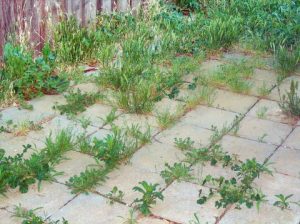In the serene landscapes of our gardens lies an epic battleground, where the forces of nature clash in a perpetual struggle for dominance. From the smallest sprout to the mightiest tree, every plant is a warrior in this grand saga of growth and survival. Welcome to the Garden Wars, where the battles against weeds, pests, and weather unfold as epic tales of triumph against adversity.
The Weedy Onslaught:
In the annals of gardening history, no foe is as persistent and infuriating as the dreaded weed. These insidious invaders emerge from the earth with relentless determination, threatening to choke the life out of our beloved plants. But fear not, for every gardener possesses the power to repel this green menace.
-
Strategy #1: Know Thy Enemy
Identify the types of weeds that plague your garden and learn their weaknesses. Annual weeds like chickweed and crabgrass can be thwarted by regular cultivation and mulching, while perennial weeds such as dandelions require a more strategic approach like targeted removal or smothering techniques.
-
Strategy #2: Mulch, Mulch, Mulch
Mulching is your shield against weed encroachment. A thick layer of mulch not only suppresses weed growth by blocking sunlight but also helps retain moisture and regulate soil temperature, creating a nurturing environment for your plants to thrive.
-
Strategy #3: Stay Vigilant
Consistent vigilance is the key to victory in the war against weeds. Regularly patrol your garden, pulling out any invaders before they have a chance to establish dominance. Remember, a stitch in time saves nine!
The Siege of Pests:
As the guardians of our gardens, we must stand firm against the relentless assaults of pests seeking to plunder our bounty. From voracious insects to cunning critters, these adversaries test our resolve at every turn. But with strategic planning and unwavering determination, victory can be achieved.
-
Strategy #1: Foster Biodiversity
Encourage natural predators such as ladybugs, lacewings, and birds to take up residence in your garden. Planting a diverse array of flowers and herbs not only enhances the beauty of your garden but also attracts beneficial insects that help keep pest populations in check.
-
Strategy #2: Practice Integrated Pest Management (IPM)
IPM is a holistic approach to pest control that combines preventive measures, cultural practices, and, when necessary, targeted interventions such as insecticidal soaps or neem oil. By understanding the life cycles and behaviors of pests, you can disrupt their activities and minimize damage to your plants without resorting to harmful chemicals.
-
Strategy #3: Maintain Garden Hygiene
Keep your garden clean and tidy to deprive pests of shelter and breeding grounds. Remove dead plant matter, fallen fruits, and debris that may harbor pests or diseases. Regularly inspect your plants for signs of infestation or damage, and take swift action to address any issues before they escalate.
The Wrath of Weather:
In the epic saga of gardening, perhaps no adversary is as capricious and formidable as the weather. From scorching heatwaves to torrential downpours, the elements wield immense power over the fate of our gardens. But with careful planning and resilience, we can weather the storm and emerge victorious.
-
Strategy #1: Choose Resilient Varieties
Select plant varieties that are well-adapted to your local climate and growing conditions. Look for heat-tolerant cultivars, drought-resistant species, and cold-hardy plants that can withstand the whims of weather with fortitude.
-
Strategy #2: Implement Water-Wise Practices
Conserve water and promote efficient irrigation by mulching, watering deeply but infrequently, and using drip irrigation or soaker hoses to deliver water directly to the roots. Consider installing rain barrels or harvesting rainwater to supplement your watering needs sustainably.
-
Strategy #3: Protect Against Extreme Conditions
During periods of extreme weather, provide shelter for your plants with row covers, shade cloth, or temporary structures. In winter, insulate vulnerable plants with frost blankets or straw mulch to safeguard them from freezing temperatures. By offering a shield against the elements, you can help your garden endure even the harshest conditions.
Conclusion:
The Garden Wars may be fraught with challenges, but they also offer boundless opportunities for growth, resilience, and triumph. Armed with knowledge, perseverance, and a dash of creativity, every gardener can emerge victorious in the timeless struggle against weeds, pests, and weather. So, tend to your garden with care, for within its verdant embrace lies the stage for your own epic tale of cultivation and conquest.



